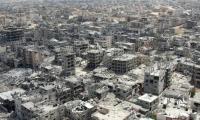KARACHI: The price of gold witnessed a staggering increase of Rs4,600/tola on Tuesday, attributed to the ongoing devaluation of the Pakistani rupee. The All Sindh Saraf Jewellers Association reported that gold rates surged to an unprecedented high of Rs234,500/tola. This surge has left both consumers and industry insiders concerned about the implications for the local economy.
Parallel with the tola increase, the cost of 10 grams of gold also experienced a notable rise, soaring by Rs3,944 to reach Rs201,046. This sudden spike in prices is in line with the global trend as gold rates climbed by $10, settling at $1,901/ounce in the international market.
Silver prices, however, remained stable, with rates holding steady at Rs2,800/tola, and 10 gram silver rates maintaining parity at Rs2,400.54.
Senior goldsmith Muhammad Shafi Khan weighed in on the situation, highlighting the complexities of the market. While gold’s value had declined internationally for a period, it regained $10/ounce, influenced in part by the weakening Pakistani rupee. Khan emphasised that the primary cause of this upheaval is the ongoing currency devaluation, which seems to have no immediate end in sight.
In Khan’s assessment, the currency devaluation has reached to record level during the past two years, leading to a ripple effect on various economic sectors. Beyond the gold industry, other commodities reliant on the dollar have been impacted, resulting in significant import disruptions. The surge in inflation is another outcome of this unfavourable economic environment, which further propelled the surge in gold prices.
He mentioned a time when the previous government had managed to temporarily control the currency situation, underscoring the urgency of revisiting those strategies. He warned that the situation was becoming increasingly unsafe and necessitated immediate intervention.
The goldsmith cautioned that without economic stability, the country’s overall stability could be compromised, urging policymakers to prioritise this matter.
The ripple effects of this gold price surge are felt not only by traders but also by jewellery manufacturers and workers. Industry players are accustomed to better business prospects when gold prices dip, as a lower rate attracts a larger pool of potential buyers. However, with the current trend of surging gold prices, this traditional pattern has been disrupted.
Elaborating on the affordability aspect, he noted that only a fraction of the population—approximately 3 to 5 percent—can actually afford gold at these escalated prices. He expressed a glimmer of hope that a stabilised currency situation could have a positive effect, bringing other commodities and services to more manageable levels.
Khan underscored the correlation between gold prices and key economic indicators, likening gold prices to a thermometer reflecting the currency’s health and other economic fundamentals. With mounting concerns about the future direction of inflation, the gold industry and the broader economy brace for potential challenges in the days ahead.
As the nation navigates this financial landscape, it remains to be seen how the authorities will address the persistent currency devaluation and its far-reaching consequences.
A disabled man casting his vote in Indian elections on May 1, 2024. — X/@CEOMPElectionsNOIDA: To go back home in...
People attend the 2023 Spring Meetings inside the International Monetary Fund in Washington, US, April 12, 2023. —...
A representational image showing a Tesla Model Y during the opening of the Tesla Gigafactory in Gruenheide, east of...
Established in 1998, IceWarp has presence in more than 100 countries and provides specialized and highly...
Women walk past a “Now Hiring” sign outside a store on August 16, 2021 in Arlington, Virginia. — AFPWASHINGTON:...
Reko Diq, one of the biggest yet-to-be-developed copper mines in the world, is also 50 percent owned by the government...







